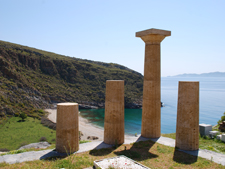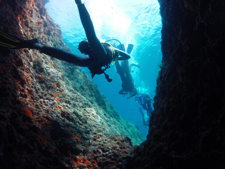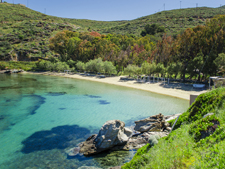Mythology
Kea is the Island of legends and myths. The humid climate that prevailed during the historic years and the abundance of water springs fostered the lush vegetation of the natural landscape but also the lush imagination of the people. This is evident in that Kea’s first name appears to be “Hydroussa”, which derives from the Ancient Greek word for water “Hydor”.
That landscape inspired many narrations about the Nymphs, the fairies of the waters, who used to live in the numerous springs in the woods. Legend has it that they vanished, terrified, towards the northern shores of the island as soon as a ferocious lion appeared in the area. Then the most radiant star of the celestial dome rose in the sky, Sirius. It burned with its dreadful rays the Cycladic land and more specifically the land of Kea, causing a dramatic shortage of water reserves and, after an extended period of drought, shrinkage of the vegetation. In order to atone for the “sacred rage” they caused, the inhabitants of the island asked for help from the son of god Apollo and nymph Cyrene that lived in Thessaly, demigod Aristeos.
Aristeos reacted to their call coming to Kea as the leader of a group of settlers from Arcadia and he established sacrifices on the highest mountain top of the island to win the gods’ appeasement. In this way, the drought was significantly confined and the annual cool winds known as “meltemia” began. According to the legend, Aristeos organized the agriculture and animal husbandry, especially beekeeping and olive tree cultivation.
Today, a stone lion, the renowned “Lion of Kea” stands in Ioulis inviting us to its mythical journey. It’s an archaic sculpture of the 6th-7th c. B.C. carved on a solid schist rock of approximately 8 m. length. You are going to meet him on the footpath that starts in the area of Aghios Spyridon and ends up to Otzias.
Another myth relating to the islands name of “Kea” comes from the prehistoric settlement of Locrians from Nafpaktos leaded by the hero Keo, also son of Apollo and the nymph Rodoessa.


Discover also…
History of the island
Pathways
Diving
Beaches




